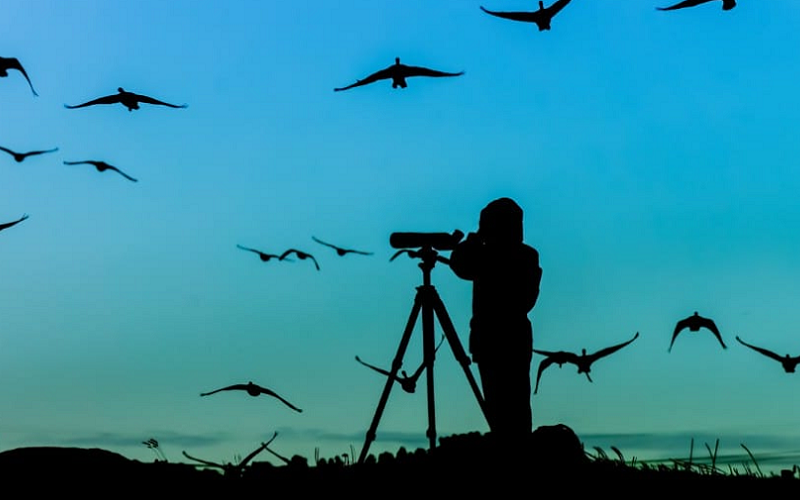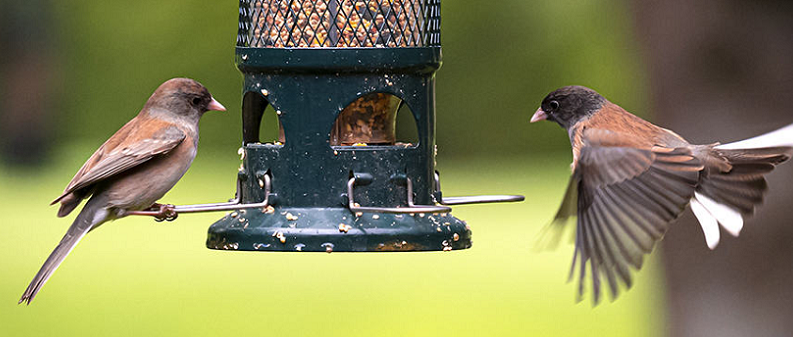
Birdwatching is a popular hobby enjoyed by millions of people around the world. It involves observing and identifying birds in their natural habitats, often with the help of binoculars and field guides. While many people are drawn to birdwatching for its beauty and the thrill of spotting rare species, the hobby has also been shown to offer a wide range of surprising benefits for well-being. From physical health to mental clarity, social connection, and education, birdwatching has much to offer.
Popularity of Birdwatching
Birdwatching, also known as birding, is a popular hobby that has gained a significant following in recent years. It involves observing birds in their natural habitats, often in outdoor environments such as forests, wetlands, and parks. The popularity of birdwatching has been driven by several factors, including the increased interest in outdoor recreation and nature-based activities.
Birdwatching is also seen as a way to disconnect from technology and the stresses of modern life, allowing individuals to focus on the beauty and diversity of the natural world. Moreover, the hobby is easily accessible to people of all ages and backgrounds, requiring only basic equipment such as binoculars and a field guide.
With the rise of social media and online communities, birdwatching has also become a highly social activity, with birders sharing their sightings, tips, and experiences with one another. The scientific and educational aspects of birdwatching have attracted many enthusiasts, with the hobby providing a platform for learning about ecology, biodiversity, and conservation.
The popularity of birdwatching is a testament to its ability to connect people to nature and to provide a sense of joy, wonder, and community.

Birdwatching Physical Benefits
Birdwatching is a hobby that can provide a range of physical benefits. First and foremost, birdwatching involves spending time outdoors, often in natural settings that require some degree of physical activity, such as walking, hiking, or climbing. As a result, birdwatching can provide a form of low-impact exercise that can help improve cardiovascular health, strengthen muscles, and increase flexibility.
Birdwatching can help individuals develop their fine motor skills, as it often requires precise hand movements and focusing on distant objects through binoculars. Birdwatching can also help individuals improve their han
Birdwatching can be a form of relaxation and stress relief, which can have positive effects on overall physical health, including reducing blood pressure and improving sleep quality. Birdwatching is a hobby that can provide a variety of physical benefits, making it a great way to improve health and well-being.
Birdwatching Mental Health Benefits
Birdwatching has been shown to offer a range of mental health benefits. For one, spending time in nature, which is often a part of birdwatching, has been linked to reduced levels of stress, anxiety, and depression. Birdwatching can provide a sense of calm and relaxation that allows individuals to disconnect from the pressures of daily life and focus on the present moment.
Birdwatching can be a form of mindfulness, as individuals focus their attention on observing the behaviors and movements of birds. This can help reduce feelings of rumination and increase feelings of purpose and focus. Birdwatching can help individuals develop a greater appreciation and connection to the natural world, which can provide a sense of meaning and fulfillment.
The social aspect of birdwatching, such as participating in group outings or sharing sightings online, can provide opportunities for social support and connection, which can have positive effects on mental health.

Birdwatching Social Benefits
Birdwatching is a hobby that can offer a range of social benefits. First and foremost, birdwatching can provide opportunities for individuals to connect with others who share their interest in nature and birdwatching. Participating in birdwatching groups or clubs can provide a sense of belonging and community.
Birdwatching can be a social activity that allows individuals to spend time with family and friends, often in outdoor settings that are conducive to relaxation and enjoyment. Birdwatching can also provide opportunities to meet new people and make new friends, especially through birdwatching events or online forums.
The social aspect of birdwatching can provide individuals with opportunities to learn from others, share experiences, and gain insights into bird behavior, habitats, and conservation.
Birdwatching Educational Benefits
Birdwatching is a hobby that can provide a range of educational benefits. First, birdwatching requires individuals to learn about different bird species, including their identifying characteristics, behaviors, and habitats. This knowledge can lead to a deeper understanding and appreciation of the natural world.
Birdwatching can provide individuals with a firsthand look at the effects of habitat loss, climate change, and other environmental issues that impact bird populations. This can help raise awareness about the need for conservation and inspire individuals to take action to protect the environment.
Birdwatching can be a great way to teach children about science, biology, and ecology, while also promoting a sense of curiosity and wonder about the natural world. Birdwatching can provide individuals with opportunities to contribute to citizen science projects, such as bird counts or monitoring programs, which can help scientists collect data and better understand bird populations and behavior.

Popular Bird Categories Birdwatchers Are Interested In Observing
Birdwatchers are interested in observing and identifying birds across a wide range of categories, including:
- Songbirds: These are small to medium-sized birds that are known for their melodious songs and are often brightly colored.
- Raptors: These are birds of prey, such as eagles, hawks, and falcons, that are known for their powerful beaks and sharp talons.
- Waterbirds: These include ducks, geese, swans, and other aquatic birds that are typically found near lakes, rivers, and wetlands.
- Shorebirds: These are wading birds, such as sandpipers and plovers, that are commonly found along coastlines and beaches.
- Gamebirds: These include birds that are hunted for sport, such as pheasants, quail, and grouse.
- Seabirds: These are birds that spend most of their time at sea, such as gulls, terns, and albatrosses.
- Non-native birds: These include birds that have been introduced to an area outside of their natural habitat, such as European starlings or house sparrows, which are commonly found in urban areas.
- Rare or endangered birds: These are birds that are either rare to find or are in danger of becoming extinct, making them particularly sought after by birdwatchers.
